NOTABLE MEMBERS

Susan Miller Dorsey
At a time when few women went to college, Susan Miller entered Vassar College at the age of 16 and graduated in 1877 at the age of 20. Four years later she returned to Vassar to teach in the classics department. In 1881 Miller married Baptist minister, Patrick Dorsey. They moved to Los Angeles where he accepted a position at the First Baptist Church. While Miller was teaching at Baptist College in Los Angeles, her husband deserted her, taking with him their only child.
Susan Miller Dorsey went on to teach at Los Angeles High School before moving on to a career in school administration. Starting as Vice-Principal of Los Angeles High School, she became assistant superintendent and was elected as Superintendent of Los Angeles City Schools in 1919, the first woman in the United States to become superintendent of a large metropolitan school system. During her ten-year tenure, the public school system experienced rapid growth going from 47,000 students in 1920 to nearly 360,000.
Susan is considered a pioneer in education. Among her many accomplishments, she advocated and secured health and retirement insurance as well as paid maternity leave and sick leave for teachers in the Los Angeles City School District. She implemented night schools, vocational schools, and community colleges and required all teachers in the district hold a teaching certificate.
At the age of 72 years, Susan resigned from a third term as superintendent to begin a long period of service. She was a charter member of Soroptimist International of Los Angeles, as such she was instrumental in the formation of the Soroptimist International of Los Angeles Foundation. Dorsey was the recipient of numerous honors and tributes. Susan Miller Dorsey High School was dedicated in 1937, making her the only living person to have a Los Angeles school named after her. The Susan Miller Dorsey Hall at Scripps College, houses 70 students, and was financed almost entirely by women. She was a member of Soroptimist International of Los Angeles until her death on February 5, 1946.
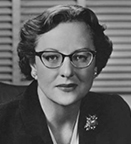
Mildred Lillie
Mildred Lillie's first job was working in a local San Joaquin Valley cannery during the Great Depression. Later she worked a number of part-time jobs to earn her way through U.C. Berkeley undergraduate and law school.
After law school and two years of private practice, Mildred rapidly moved up the judicial ladder:
- In 1947, Governor Earl Warren appointed her to the Los Angeles Municipal Court
- In 1949, Warren moved her up to the California Superior Court (she was the youngest person ever named to the Supreme Court)
- In 1958 Governor Goodwin Knight appointed her to the Court of Appeals
- And in 1984, Governor George Deukmejian named her Presiding Justice, Court of Appeals, Second Appellate District, where she remained until her death in October of 2002
Her success almost resulted in an appointment to the U.S. Supreme Court when President Richard Nixon considered naming her as the first woman justice. The American Bar Association evaluation committee did not approve and the seat was eventually filled by William Rehnquist. Some felt the evaluation committee did not feel it was time to have a woman on that high court. Mildred lived to see Sandra Day O’Connor (a former Soroptimist from SI Phoenix) achieve that milestone.
Before her death, Justice Lillie witnessed the evolution of women into the law profession. “Today more than 50% of the students in our nation’s law schools are women and I have watched with pride the upsurge of women in the profession." Lillie has been characterized as ”the most revered and accomplished jurist in the history of the State of California.” As a tribute to her excellence, the Los Angeles County Law Library building was renamed the Mildred L. Lillie building.
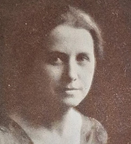
Mae Carvell
Mae Carvell was a charter member of SI of Los Angeles (then known as the Los Angeles Soroptimist Club). Mae was born on a ranch in Missouri on October 21, 1880. Her family moved to California in 1887 where they lived in a tent in Altadena until her father got a job as a ranch foreman. The family eventually settled permanently in Los Angeles.
She became a teacher of business subjects at the Los Angeles Commercial High School (now known as Los Angeles Polytechnic High School) and later became the first high school Registrar in the State of California. During summers, she attended Law School at UC Berkeley, passing the State Bar Examination in 1918. She taught Commercial Law and later was admitted to practice before the Supreme Court of the United States.
She did not enjoy teaching, saying “but I got so tired of everlasting papers to be checked and graded. They always hung around!” After resigning from Los Angeles Polytechnic High School, she entered the Prince School of Retailing in Boston, Massachusetts and after graduation moved back to Los Angeles and became Educational Director for the Broadway Department Stores. In 1919, Mae became Broadway’s Director of Research and System - the first female Industrial Engineer in the United States! She was appointed by the Governor of California to the State Industrial Welfare Commission where she served for four years.
Mae's influence on Soroptimism was huge. She led the committee which purchased the rights to the name “Soroptimist” from Stuart Morrow for $5,500. She represented the Los Angeles Soroptimist Club at the first National Convention and was active in framing the first Constitution and By-laws of the American Federation of Soroptimist Clubs. She was elected Treasurer of the Federation in 1928. Mae developed the Junior Soroptimists/S-Clubs and Venture Club programs within Soroptimist, both of which were geared for youth career mentorship. Venture Clubs continue independently today.
Every year hundreds of women around the globe are honored with the Mae Carvell Award for Outstanding Contribution to the Upliftment of the Status of Women (Venture Clubs) and the Mae Carvell Women Helping Women Award (Soroptimist International).
Mae Carvell was a member of SI of Los Angeles until she passed away on November 15, 1971.
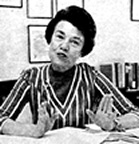
Muriel Morse
Muriel attended Stanford University from which she graduated magna cum laude and was a member of Phi Beta Kappa; a year later, in 1935, she earned her Master's Degree. While at Stanford, she met her future husband, Barnard A. Morse, a former Southern California Edison executive.
She served as Los Angeles personnel manager from 1965 until retirement in 1978. For many years, she was one of the highest-ranking woman in local government in the United States. After retirement, Morse was appointed by Governor George Deukmejian as the public member of the state Industrial Welfare Commission.
Muriel had a distinguished record as a volunteer; her tireless work as a member of Soroptimist International of Los Angeles resulted in her election in 1971 to the Presidency of the Soroptimist Federation of the Americas and in 1976 as President of Soroptimist International. She also served as president of the International Personnel Management Association, the Women’s Division of the Los Angeles Chamber of Commerce, the Visiting Nurses Association of Los Angeles, and the Phi Beta Kappa Alumni in Southern California.
She worked for the United Way of Greater Los Angeles for over 40 years. As she said in 1969 while addressing a group of volunteers, “Helping others demands a sharp self-awareness, which permits us to acknowledge an individual and to receive as well as to give. Individuals, regardless of circumstances, have as great a need to help as they have for help.” In addition to her work with the city and her volunteer work, she also taught classes at Stanford, Caltech, and USC, and loved trout fishing and growing cymbidium orchids.
Among her many honors, Muriel was named a LA Times Woman of the Year in 1961, and the International Public Management Association for Human Resources gives the Muriel M. Morse Achievement Award to a deserving individual who “exemplifies the positive attributes of Muriel Morse.”
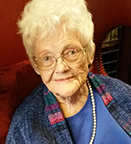
Barbara Jury
Barbara graduated from Redlands High School went on to Redlands University where she took musical classes before transferring to USC to focus on nursing. She graduated from USC in 1950 with a BS and a license as a Registered Nurse and completed her education in 1961 with a Master's from UCLA.
She spent her long nursing career at California Hospital. She was Director of Nursing and Supervisor of the Newborn Nursery during which she pioneered specialized procedures for premature babies. Her final position at California Hospital was as their first Risk Management Director, a relatively new field at that time. Barbara used to tell us “if you had asked me first you would not be in a mess now!”
As a Soroptimist International of Los Angeles member for over 50 years, Barbara served in many capacities including three terms as club President and as Governor of Camino Real Region, making her a recognized GEM (Governor Ever More) within Soroptimists. She attended Soroptimist conferences, conventions and other events in Canada, Hawaii and Japan.
Along with her work with SI Los Angeles, Barbara volunteered for KUSC (USC’s classical music station) and Barlow Respiratory Hospital Guildhouse, and was an avid supporter of Da Camera Society, Downtown Women’s Center, and Hope Street Center. Along with SI of Los Angeles member Joyce Jacob, Barbara curated California Hospital Medical Center’s School of Nursing Museum.
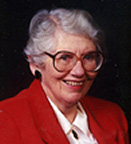
Betsy MacCracken
During World War II, Betsy joined the WAVES and served as a commissioned U.S. Naval Officer. After the war, she practiced medicine, joining the faculty of the Department of Pediatrics at the College of Osteopathic Physicians and Surgeons in Los Angeles, and the Pediatrics staff at the LA County Hospital. She earned a Master's in Public Health in 1961 from U.C. Berkeley, after which she joined the LA Board of Public Health, and was named LA County’s Epidemiologist in 1969. Dr. MacCracken taught both UCLA’s School of Public Health and UCI’s Medical School.
Betsy was an active member of Soroptimist International of Los Angeles, serving as President in 1955-56 and as chair of several committees. Barbara Jury remembers that Betsy was the 1987-88 Fellowship Honoree and was also a Director for the Foundation. “Soroptimist International of Los Angeles was very important to Aunt Betsy,” noted her niece Susan Hancock. “The support for women, particularly those going to college, was one of her priorities, so the establishment of Soroptimist House and the awarding of scholarships were high on her list and one of the things she loved about Soroptimist International of Los Angeles.”
She also was active in the First Congregational Church of Los Angeles, served on the Board of Trustees for the K-12 Pilgrim School affiliated with the church, and was a member of the Committee of Professional Women in support of the Los Angeles Philharmonic.
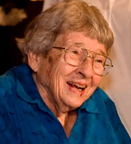
Joan D. Johnson
Joan Johnson began playing tennis young, and was a serious player by the age of 17. Between 1954 and 1970, she won 18 national public parks titles and competed at Wimbledon as well as around the world. Joan and her partner Geralyn (Jeri) Shepard competed in three of the four Grand Slam events over the course of their careers.
She began teaching at the then Los Angeles State College in 1955, teaching Tests and Measurements, Statistics, and Research Design. She was instrumental in founding the Women’s Recreational Association and the Southern California Women’s Intercollegiate Tennis League. In 1957, she became the coach of the first women’s tennis team on campus, whose roster included Billie Jean King as well as several national, state, and regional champions.
Joan was the first woman in the country to manage an NCAA Division I athletics program, and was instrumental in developing Title IX of the Education Amendments of 1972 which protects people from discrimination based on sex in education programs or activities receiving federal funding.
In 1996, she was inducted into the Intercollegiate Tennis Association Hall of Fame for her significant contributions to the growth and development of women’s intercollegiate tennis.
For her memorial service, Billie Jean King wrote of Joan “When it came to college tennis, she was a game changer. And for me, she was a life changer.” Al Marino, a colleague and friend, praised Joan as “a talented and accomplished woman who led with honesty, integrity, and a definitive vision...,” to whom “every girl and woman who ever donned an athletic uniform since the ‘70s owes a debt.”
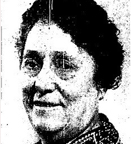
Minnie Barton
Minnie Barton was a member of SI of Los Angeles since at least 1930 until her death in 1946. She was the first woman probation officer in Los Angeles and was a member of LAPD from 1906 until she retired in 1942. Minnie is credited with creating and defining the role of Chief Woman Probation and Parole Officer. When she first joined LAPD, the Penal Code did not provide for a police probation officer, so she worked for 10 years without a salary.
Minnie befriended homeless girls while working with young women on parole or probation. She took them into her home and taught them basic skills and handicrafts. In 1917, she founded the Minnie Barton Training Home, where young female offenders were often committed rather than to jail. 15-20 women at a time lived there, who stayed anywhere from under a month to two years. The Minnie Barton Training Home was the only aid agency in Los Angeles that took children, and they often had to turn mothers away due to overcrowding. In 1923, Minnie opened the Bide-A-Wee Home for Deserted Mothers to address this need. Minnie also established the United Way’s Big Sister League (now known as Children’s Institute International) and the Barton Recreation Home for Old Persons.
An article in the Los Angeles Times on March 10, 1940, quoted Minnie Barton as saying “The women of the United States have waked up to the fact that it is up to them to right things. Just look at all the things that are being done for men and boys in this city, and all the money that is being spent by the city and by social agencies. Compare that with the little that is being done for girls and women … When you think of their problems, you realize that it is up to us women to take care of them.”
